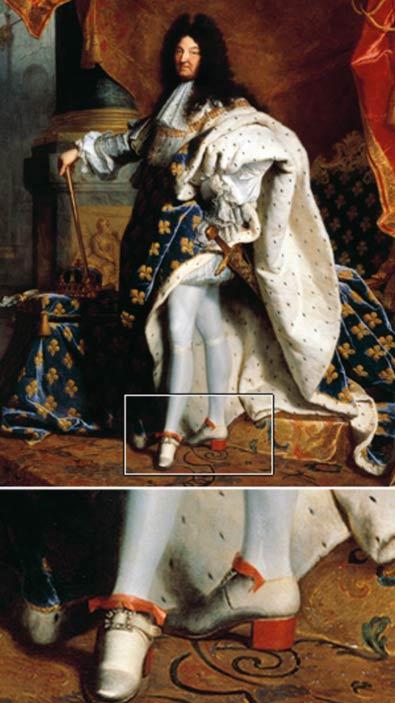High heel shoes are today a form of footwear worn almost exclusively by women. Yet, the history of high heels shows us that this was not always the case. On the contrary, high heels were, at various points of time in history, worn by men as well. In addition, whilst high heels are worn today for aesthetic purposes, it has not always been so in the past, as it served practical purposes at times.
Whilst it is unclear when high heels were first invented, it seems that they were used by ancient Greek actors. The “kothorni” was a form of footwear worn from at least 200 B.C., which raised from the ground by wooden cork soles that measured between 3 and 4 inches (8 and 10 centimeters). It is said that the height of the shoes served to differentiate the social class and importance of the various characters that were being portrayed on the stage. Thus, this form of raised footwear served neither a practical nor aesthetic purpose, as it was a piece of garment worn exclusively by members of a certain profession, theater performers in this instance, when they were at work.
The next appearance of high heels can be traced to the Middle Ages in Europe. During this period, both men and women wore a kind of footwear known as pattens. The streets of many Medieval European cities were muddy and filthy, whilst the footwear of that period were made of fragile and expensive material. Thus, to avoid ruining these garments, both men and women wore pattens, which were overshoes that elevated the foot above the ground.
Whilst the patten was used mainly for practical purposes, another type of European footwear served both a practical and symbolic function. The chopine was a type of footwear related to the patten, and was popular amongst the upper classed women of Venetian society during the 15th to 17th centuries. It is said that the higher the chopines, the higher the status of the wearer, with some examples of this footwear reaching a height of 20 inches (50 centimeters). As one may guess, it was not exactly the most practical sort of footwear to be walking around in. This meant that the women who wore the chopine required servants to help them maintain their balance. Perhaps the display of wealth and status was not only displayed through the height of the chopine, but also by the fact that servants were needed just to assist a wealthy woman in the act of walking.






